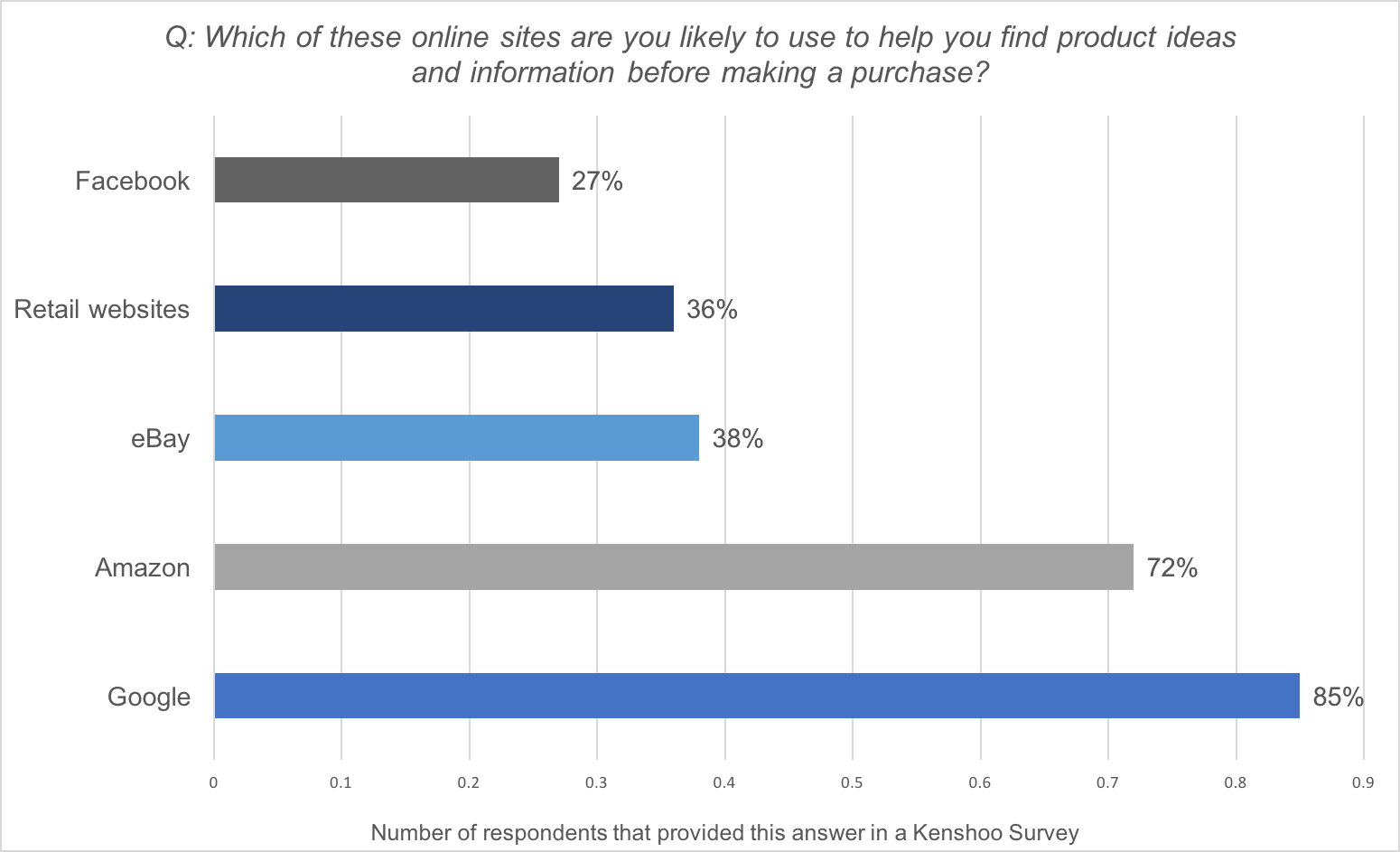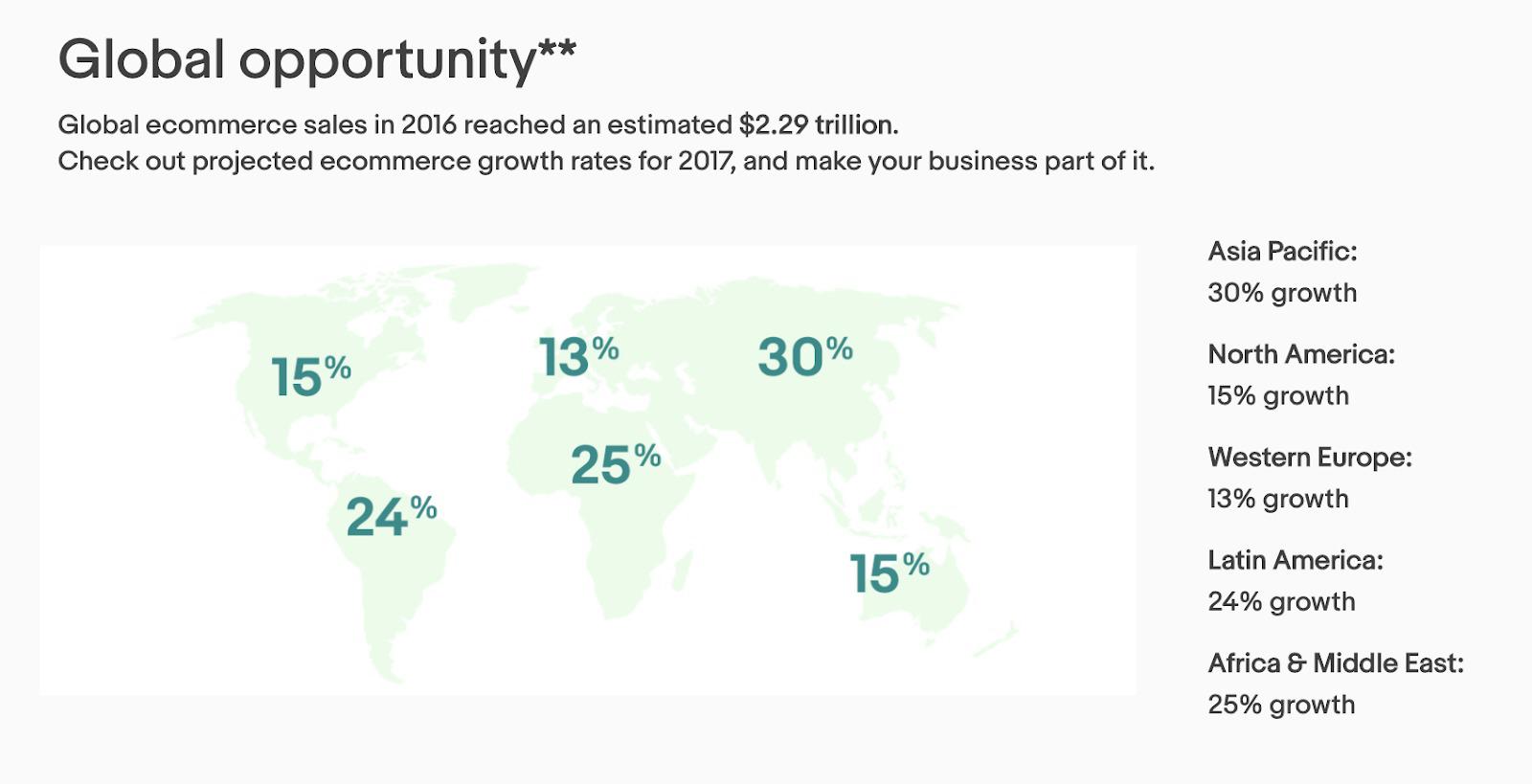Members Area
Section C: List Your Product(s)
1. Listing Introduction

Listing Introduction
If you really want to expand your eCommerce business, online marketplaces are a must. But to reach this level of success, there’s one thing you’ll have to get right:
To be as profitable as possible on these platforms, you need to first identify the best online marketplaces for your brand.
Each online marketplace has its own unique requirements, product categories, listing fees, and audiences. So if you want to be sure you’re making the right decision, some upfront research is necessary. You’ll want to understand the different strategies for selling on marketplaces, which ones hold the most promise for your products, and what you need to do to ensure a smooth start.
Does that sound overwhelming? Not to worry. We’ll go over each of these areas in detail. In this deep dive, we’re covering all the need-to-know essentials.
Ready to get started? Let’s dive right in.
Step 1: What is an Online Marketplace?
At its core, an online marketplace is an eCommerce site that offers many different products from many different sellers. Some of the most well-known marketplaces include:
Amazon, eBay, Walmart, Etsy, Alibaba.com, and Google Express.
However, these are far from your only options. In fact, there are now over 100 online marketplaces you could potentially leverage to reach customers doing their online shopping — both within the United States and overseas in areas like Japan and Europe, with trillions of dollars in revenue potential just waiting to be tapped.
Yes, it’s a lot to consider. But remember: you don’t need to go after them all at once. You just need to determine which channels are the best fit for your brand.
But first, let’s back up and discuss why you should consider becoming a third-party seller in the first place.
The Biggest Benefits of Selling on Online Marketplaces
With the ever-increasing popularity of eCommerce marketplaces and online sales, these channels are constantly coming up with new ways to keep customers happy.
That’s great news for third-party sellers.
It means most marketplaces will go to great lengths to make it as easy as possible for brands and retailers to market, sell, and fulfill. Why? Because the easier it is for you to use the platform, the better the experience will be for shoppers — and the more likely they’ll be to keep coming back for more.
This takes shape in three particularly attractive advantages:
1. Fast Launch times.
If you’re new to selling online, marketplaces can be an excellent way to generate revenue and build your brand as you work to drive traffic to a new ecommerce website. Once approved as a third-party seller on marketplaces, you simply upload your product feed and start selling.
If you’re new to selling online, marketplaces can be an excellent way to generate revenue and build your brand as you work to drive traffic to a new ecommerce website. Once approved as a third-party seller on marketplaces, you simply upload your product feed and start selling.
Do you already have an established online store? Here’s another trick: Some brands use “where to buy” widgets to send visitors from their websites directly to marketplace product pages, where consumers can add items to shopping carts without being immediately exposed to competitors.
2. Established Programs.
All of the biggest and most established online marketplaces have programs in place to help you easily navigate the waters of marketing, selling and fulfilling.
For example, sellers on Amazon, eBay, and Google have access to Amazon Advertising, eBay Promotions Manager, and Google Shopping Actions. Each of these digital marketing programs are packed with tools to help you get products in front of all the right customers, at just the right times.
Similar options are available to help sellers meet consumer expectations for fast, free deliveries. With programs such as Fulfillment by Amazon (FBA) and eBay Global Shipping, for instance, you can opt to have the marketplace warehouse, pick, pack and ship inventory on your behalf.
3. Large Customer Bases
As you may have guessed, many online marketplaces have enormous built-in audiences of consumers who regularly shop these sites. Just think: between Amazon, eBay, and Walmart alone, you’re looking at close to 500 million active monthly visitors.
But did you know that many of those consumers start with marketplaces when they want to purchase products? They don’t even bother with Google or retail websites. In fact, 56% of all product searches now begin (and often end) on Amazon.

Marketplace Likelihood
If your products aren’t showing up in those search results, there’s a chance your competitors will land the marketplace sale before consumers ever think to visit your online store.
2 Business Strategies for Selling on Marketplaces
Contrary to popular belief, selling on marketplaces doesn’t have to be an all-or-nothing proposition.
Sure, there are ways to deeply embed your business within the world of marketplaces. But if you’d rather take your time and test out different options, there are equally effective ways to do that, too.
Here are two different approaches to consider:
1. Starting a new business on marketplaces.
If your small business is looking for a fast, easy way to get products in front of shoppers, selling on ecommerce marketplaces is an excellent place to start.
While your choices may be slightly more limited compared to those of established brands and retailers, plenty of options are available to consider.
For example, invite-only marketplaces such as Walmart and Target + will want to see a history of on-time deliveries and positive feedback before accepting you as a third-party seller.
But others will let you set up a seller account right away, including Amazon and eBay. Once you begin to build up positive reviews and ratings on those platforms, you can apply to sell on additional marketplaces as well.
2. Expanding your online store to marketplaces.
Even if you already have a thriving online store, uploading your products to select ecommerce marketplaces is an excellent way to expand your reach.
In fact, I’d go so far as to say you could be missing out on sales by not incorporating marketplaces into your strategy.
Why? Because consumers have come to expect multiple options for buying the same product.
This is especially notable with Amazon. An estimated 44% of Amazon shoppers say they always check prices on Amazon before making a purchase on another site. More than half go to the marketplace to read full product descriptions, and 60% visit it specifically to look at product reviews.
And that’s just on Amazon. Many consumers will also consult with other marketplaces to compare prices and buying options. By expanding your online store to these platforms, you can help shoppers find the information and offers they need to buy where, when and how they want to.
7 Essential Steps for Online Marketplace Success
While you could test dozens of different strategies on each marketplace, a handful have really stood the test of time. These seven steps will go a long way in getting your new marketplace account set up for long-term success.
Consider using foreign language words
1. Optimize product content.
There are product listings shoppers see, and product listings people buy.
The difference?
Your product content. Product titles, descriptions and categories are often what compel consumers to make purchases. The more effort you put into these, the more likely you are to see your listings rise to the top of marketplace search results.
Take time to find the right keywords, create compelling product descriptions, identify the best categories and optimize your images.
2. Prepare to advertise.
The vast majority of product pages are populated with ads. But these aren’t like the popups and banners that people tend to block or ignore. These ads get clicked.
If you want to be truly successful on marketplaces, you’ll need to invest in at least a little digital marketing to help put your products front and center. (Case in point: ChannelAdvisor sellers who advertise on Amazon grow 63% faster than those who don’t.)
3. Calculate profits.
Each online marketplace has its own set of seller transaction fees, commissions and requirements. Taking time to understand these differences today can ensure they’re profitable channels for you tomorrow.
4. Automate your pricing.
You may have solidified pricing on your online store, but that doesn’t mean those exact prices will automatically carry over to each marketplace.
Remember: within marketplaces, shoppers often have an array of options for purchasing the same product at different prices.
To remain competitive in this area, you’ll need to adjust the price of each product up or down based on your competitors’ pricing. Even just a few cents can be enough to win the sale. Many sellers use algorithmic repricers to automate this process.
5. Diversify your shipping strategy.
Marketplace shoppers don’t just want fast, free shipping. They expect it. An astounding 96% of customers now expect free shipping, and 26% will abandon a shopping cart if shipping is too slow.
Without a cost-effective way to deliver on these demands, fulfillment costs could soon be eating up your profits. For this reason, having consistent access to the most competitive carrier pricing and delivery options is essential.
There are several ways to diversify your shipping strategy. Some sellers choose to leverage programs like Amazon FBA, while others rely on third-party logistics providers such as ShipBob or ShipStation.
Many use a mix of different methods to ensure the fastest, most affordable option for each order. In this scenario, you might use private carriers such as UPS and FedEx for some orders, and USPS for others.
6. Be ready to expand.
If you’re serious about growing an ecommerce business, you’ll eventually want to start expanding to multiple online marketplaces.
When you do, the key is to streamline your growth. Many companies do this by relying on an ecommerce platform built to integrate with dozens of different marketplaces. That way, instead of uploading your product data every time you decide to expand, you simply add your data and list products once — and then tell the platform when it’s time to share it with another marketplace.
7. Let your customers know.
Last but not least, don’t forget to spread the word! Send an email, do a push on social media or add call-to-action buttons on your website. Whatever you choose to do, make sure your customers know they can now buy from you on their favorite marketplaces.
4 Quick Start Online Marketplaces
Based on ChannelAdvisor’s experiences with more than 2,700 sellers and processing more than $10 billion in gross merchandise volume, we know that the vast majority of sellers are able to launch quickly by starting with a handful of the most established marketplaces.
Each marketplace comes with its own set of seller fees, commissions and requirements, so it’s important to weigh your options carefully. Here are four to consider:
1. Amazon.
One of the biggest benefits to selling on Amazon is the access you can get to the marketplace giant’s 100 million Prime members. These consumers spend an average of $1,400 a year on Amazon, making it a goldmine for brands and retailers. Whether you choose to fulfill orders yourself or rely on FBA, making your products available to Prime members is key.
Once you start selling on Amazon, you’ll have plenty of other factors to take into consideration, but for now your biggest decision will be which selling plan is the best fit for your business.
Amazon’s individual selling plan is enough for most third-party sellers that want to get started immediately. But if you have products in niche categories like collectibles or fine art, you’ll need to have a professional plan and apply for permission.
The professional selling plan is $39.99 a month, plus:
Per-item selling fees, which vary by category, and
Variable closing fees and referral fees.
With an individual selling plan, you’ll pay $0.99 per sale, as well as selling fees based on each category.
2. eBay.
If you want to tap into the power of yet another channel with vast global market share, eBay is a great option. This expansive marketplace gives you access to 168 million active buyers worldwide who together generate $95 billion in annual gross market value. With 190 markets around the world, you’ll have plenty of opportunities to expand and grow.

^ Global Opportunity with Ebay